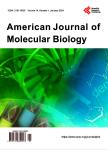In-Vivo Anti-Hyperlipidemic Activity and Preliminary Phytochemical Screening of Canephora robusta
In-Vivo Anti-Hyperlipidemic Activity and Preliminary Phytochemical Screening of Canephora robusta作者机构:Department of PharmaceuticsVaageswari College of Pharmacy Karimnagar India Department of PharmacologyVaageswari College of Pharmacy Karimnagar India Department of Pharmaceutical Chemistry Vaageswari College of Pharmacy Karimnagar India Department of Clinical Pharmacy Vaageswari College of Pharmacy Karimnagar India Department of Pharmaceutics Geethanjali College of Pharmacy Hyderabad India
出 版 物:《American Journal of Molecular Biology》 (美国分子生物学期刊(英文))
年 卷 期:2020年第10卷第1期
页 面:44-50页
学科分类:1002[医学-临床医学] 100201[医学-内科学(含:心血管病、血液病、呼吸系病、消化系病、内分泌与代谢病、肾病、风湿病、传染病)] 10[医学]
主 题:Anti-Hyerlipidemic Anti-Obesity Lipoproteins Hyperlipidemia
摘 要:The main aim of this study is to determine the anti-hyerlipidemic and anti-obesity activity of Canephora robusta in hyperlipidemia induced rats. Prepared coffee bean extract (GCE) was procured from the market which is unroasted and contains more quantity of caffeine and chlorogenic acid when compared to roasted coffee. Male albino Wister rats are fed with high fat diet (HFD) for weeks to induce hyperlipidemia in rats, which are divided into 4 groups with 4 animals in each group. Test GCBE was given in doses of 200 mg/kg and 400 mg/kg to III and IV groups which are fed with HFD for 30 days. Then blood samples were collected through retro-orbital sinus by capillaries and serum is separated for analysis. The result obtained from lipid profile which includes total cholesterol, triglycerides, very low density lipoproteins, and low density lipoproteins shows the decreased level when compared to the hyperlipidemic control. This shows the significant reduction of total body weight (p 0.05) when given with dose of 200 mg/kg and 400 mg/kg. The present study suggests that GCBE has anti-obesity and anti-hyperlipidemic activity, where 400 mg/kg is more effective to reduce the total body weight and lipid levels when compared to 200 mg/kg. Further studies on this extract may lead to identify the possible mechanism of action and isolation of active principle from the same.



